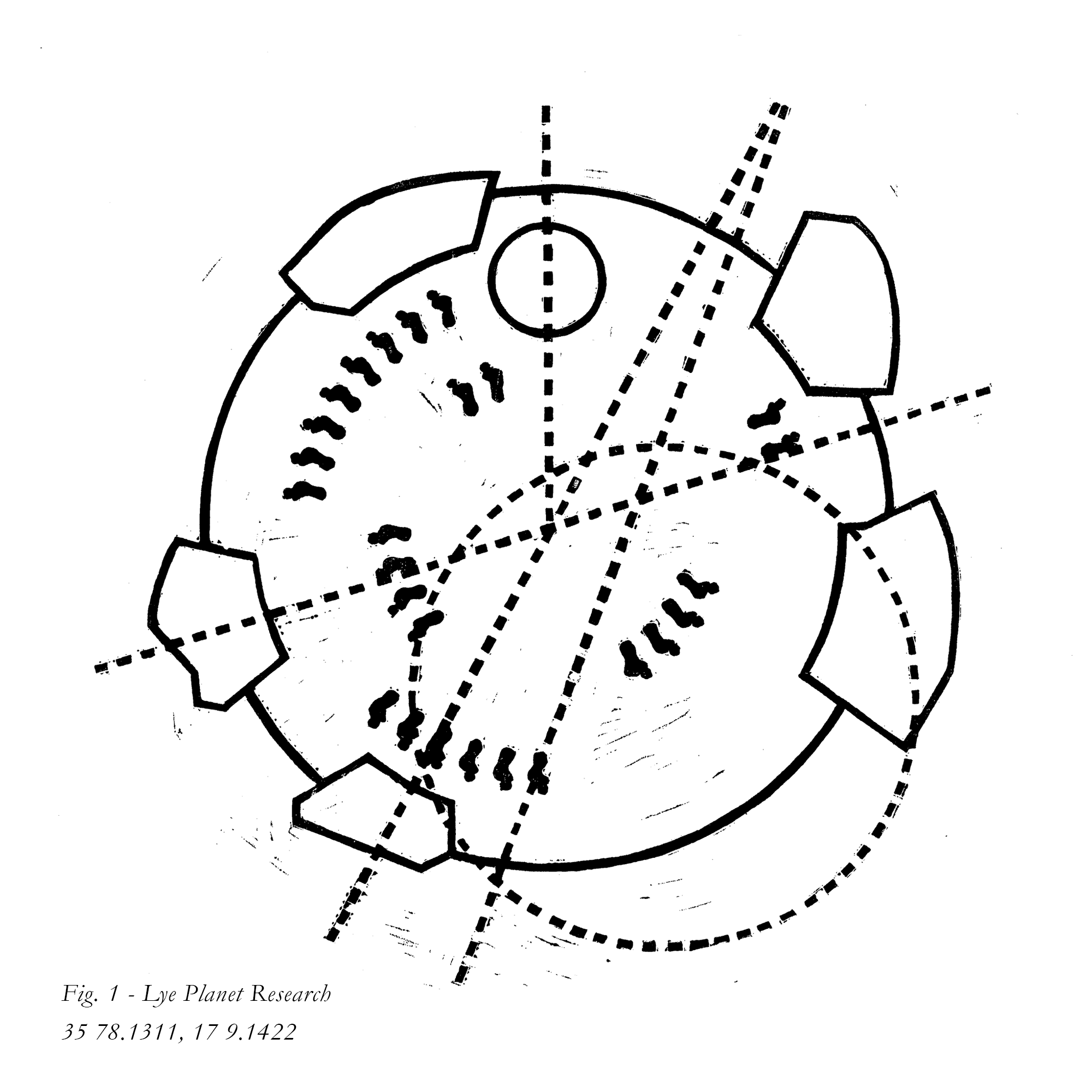
Excerpts from an interview with Adeline Monan
'For a long time, we were calling these diagrams forecasts, like weather forecasts, because of how they looked, but we were also considering their function as decorative or domestic items, given the Lye Planet’s rich visual and narrative culture. We were floating the idea that the knowledge contained in these diagrams could be symbolic, as we might hang a proverb or a religious verse inside a house. It was only after the [Lye Planet Research] Symposium that we were able to make the connection between these diagrams and the work being done by scientists in Topography. The Topography team had discovered curious occurrences of nitrogen scarring on the surface of the planet, which they were confident was the chemical indication of biological decay over substantial periods of time. The scarring was the only remaining evidence of where inhabitants of the Lye Planet had been buried. These graves, as it’s easier to call them, were arranged in circular and linear patterns on a huge scale - examples were found across an area equivalent to our Asian continent. These findings were presented at the symposium, and the Topography team had made helpful illustrations of the grave placement, or the patterns of nitrogen scarring, for the audience. It was a really exciting moment for our team at Artefact Recovery, because we knew right away that they were similar, in some cases identical, to the diagrams that we had been studying. There was no question they were connected.'
'Our new research is now focused on two questions. The first asks what role the diagrams play in relation to the arrangement of these bodies. While we can roughly date the time of their preservation, we have little information about when the diagrams themselves were created: whether they were produced as records or maps of these 'graveyards', for lack of a better word, or whether the diagrams preceded the deaths, serving some kind of instructive purpose that reflected a shared cultural practice. But more interesting than the causal relationship between the diagrams and the arrangement of bodies is the timestamp for these burials. The Topography team discovered identical periods of decay in every grave arrangement, meaning that these burials were completed at the same time across large geographical distances. And this is our second question: what was responsible for these simultaneous deaths? It’s not impossible that the meteorological effects of the Decline caused a freak weather event that wiped out a significant number of communities at the same time, but some members would have to have survived to complete these precise burial arrangements. Our team has been exploring the idea that it was some kind of cultural movement, a deliberate act that reflected a change in the lived experience these communities were encountering during the Decline, an acceleration of their life cycles so that they might escape the effects that sun-death was having on their planet, including the splintering of their sense of unity with the surrounding eco-systems.'
'The increasing rate of irregular weather events during the Decline affected areas of the Lye Planet in different ways. The vast majority of settlements neighbouring the 'graveyards' appear to have been ravaged by wildfires. Everything that wasn’t deliberately preserved has been completely burnt up, and so it’s very difficult for us to guess how many of these diagrams would have existed. It could be that their ordinariness meant they were not considered for preservation by a later party, or they might have been coveted objects that only certain family groups were able to possess. We have struggled to find any evidence of a fully-fledged class system on the Lye Planet – this kind of social organisation seems in direct conflict with the values that the inhabitants of the planet shared – but there is a salient question about who had access to preservation vats and what would have been acceptable to preserve or not. It has been proposed that the diagrams might have been prohibited or disapproved of in some way – that the collective dying event, if deliberate, was a radical departure from the previous beliefs of these societies – which could explain why so few of them made it into the preservation vats. We’re hopeful that a clearer explanation for these diagrams will surface among the many preserved texts that are currently in translation.'